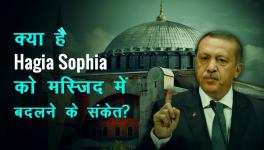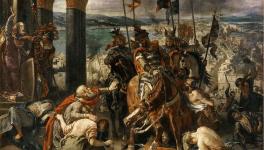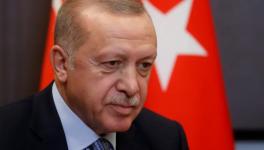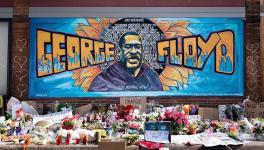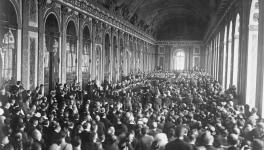Hagia Sofia: Church, Mosque, Museum, Edifice of Many Souls
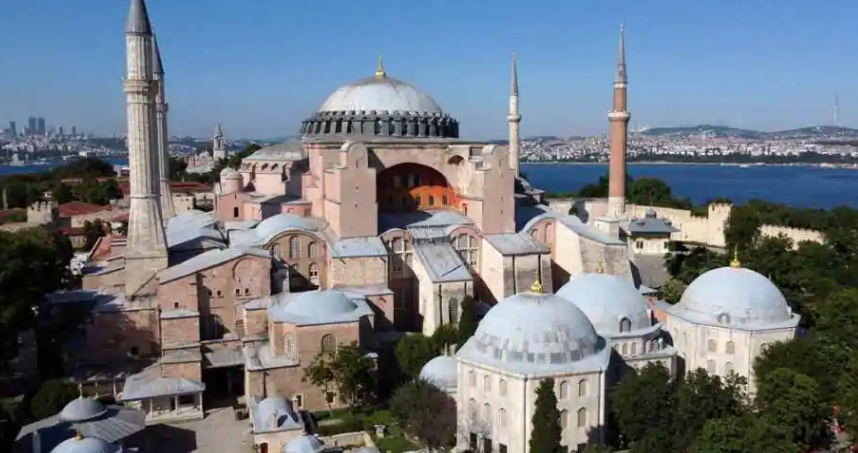
Hagia Sophia. Image Courtesy: Reuters
The world woke up on Friday 10 July to learn that Hagia Sofia, the 1,500-year-old edifice in Istanbul which represents several civilisations, has changed status as a museum and UNESCO World Heritage site to be a mosque—once more.
President Tayyip Erdogan made this announcement shortly after Turkey’s Council of State, the top administrative court, adjudicated that the conversion of the mosque into a museum in 1935 by Mustafa Kemal Pasha, (also known as Ataturk—father of Turks) founder of modern Turkey, was illegal.
Kemal Ataturk performed a Herculean task in modernising Turkey. Earlier it was the centre of the Ottoman Empire which spanned three continents, North Africa, West Asia, Eastern Europe. It was feared and courted by European powers. However by the 19th century, when nationalism began dismembering the empire it was called “the sick man of Europe”.
Kemal Ataturk was born to a Muslim family in Ottoman-ruled Greece. Seeing the medieval conditions of the empire, he joined the “Young Turks” movement that deposed the sultan in 1909 and later fought bravely in the Ottoman army. After the First World War he began a reform movement. In 1922 the Sultanate was abolished and then the Caliphate in 1924. By the Treaty of Lausanne in 1923, Turkey was declared a secular republic. The sixteen centuries old capital Constantinople was renamed Istanbul and a new capital was established at Ankara.
President Mustafa Kemal initiated religious, social, economic and cultural reforms. Islamic polygamy and divorce by Talaq were abolished. The system of civil marriage was introduced. Women were allowed to vote. The Grand National Assembly decided political life. Under Kemal’s guidance, Istanbul became a modern city though it retained its rich architectural legacy. He wanted the Turkish republic to be part of modern western life.
Conversion of Hagia Sofia into a museum was part of his reform program.
Sensing the injustice done in 1453 when the church Hagia Sofia was turned into a mosque by the victorious Turkish army, he enacted a law to transform the church-turned-mosque into a museum. The Turkish people accepted this decision. Hagia Sofia continued to be revered by both Christians and Muslims—and admired by scholars and visitors.
As Islamic fervour gained momentum in the 1990s and once more there began a legal battle to turn the museum into mosque. Turkey’s Council of State declared that the Hagia Sofia was “the property of the Ottoman leader who captured it”. This legitimises acts of appropriation through wars of conquest.
President Erdogan may have overlooked the fact that Christians could claim ownership as it was built by a Christian Byzantine emperor. His party has now declared that the Christian icons inside Hagia Sophia, fashioned in grand mosaics, will be covered up by curtains or lasers during the Muslim prayers.
There has been robust protest from the Greek Ministry of Culture who called President Erdogan’s act as “open provocation to the civilized world.” The people of Greece belong to the Greek Orthodox faith and Hagia Sofia was the citadel of the Greek Orthodox Church from the 6th to 15th century. Russia too has reacted against this act as Russians belong to the Greek Orthodox Church. They felt this “decision could lead even greater divisions.” The Ecumenical Patriarch Bartholomew who is based in Istanbul and is the spiritual head of three million Greek Orthodox Christians worldwide observed that President Erdogan’s decision would “disappoint Christians and would fracture East and West.” American church leaders and the Geneva-based World Council of Churches have strongly expressed their disapproval of this act. Finally, Pope Francis has expressed his sadness on the decision and has asked President Erdogan to review his decision.
Hagia Sofia has a tangled history. It was built in Constantinople by the great Byzantine Emperor Justinian in the 6th century on the ruins of a Roman temple of the 3rd century BC. As the Byzantine Empire had broken away from the Roman Church in the 4th century, Constantinople was not only capital of the vast Byzantine Empire but was also centre of the Greek Orthodox faith. As Justinian was a classical scholar he dedicated the new church not after a Christian saint—as customary—but to Hagia Sofia or holy wisdom emanating from the Creator. True to his name, after ascending the throne the emperor began working on a new legislative system that was called the Justinian Code. Amidst this he began construction of Hagia Sofia, summoning artists and renowned architects such as Anthemius and Isodore for the monumental project.
In a departure from the basilica pattern, they conceived of a central dome which would not be supported by walls but by huge piers and half-domes on either side. The ground plan was in the shape of a Greek cross. A small dome was erected over each end of the cross. The huge central dome was 100 feet in diameter, resembling the structure of the Pantheon in Rome. But unlike the Roman model, the dome of Hagia Sofia rested on pendentives and arches—a Byzantine architectural innovation.
Ten thousand men completed the construction in five years. Emperor Justinian supervised and gave directions on the work. Goldsmiths from Venice, mosaic craftsmen from Ravenna, stone-carvers from Syria were brought to embellish the interior. Pillars and columns had Greek motifs. Mosaics depicted scenes from the life of Christ, saints and past emperors. Splendid glass cubes ornamented the interiors. Silver chandeliers, metal lacework, pulpit inlaid with ivory and alter of gold made Hagia Sofia the richest church in Christendom.
When the church was completed Justinian headed a procession on 26 December 537 AD, followed by the Patriarch of Constantinople. Later, standing at the centre of the church, Justinian cried out triumphantly, “Glory to God, who has thought me worthy to accomplish so great a work!”
As Byzantine armies expanded imperial territory, her culture travelled to distant parts of the empire. Hagia Sofia inspired the style of numerous churches throughout the Byzantine Empire and Russia.
In 950 AD Grand Duchess Olga of Russia was ceremoniously received by the Byzantine Emperor Constantine VII and baptised as a Greek Orthodox Christian in Hagia Sofia. While it was an act of faith for the Grand Duchess, for Constantine VII it was a triumph of diplomacy as he sought to fortify relations with the powerful Russian kingdom on the frontiers of the Black Sea. Soon after, Olga’s grandson Grand Duke Vladimir accepted Greek Orthodox Christianity. This was a momentous event in Russian history. Russia inherited a legacy of Byzantine culture and politics and remained aloof from Western Europe until the advent of Tsar Peter the Great.
Though Byzantium was part of Greco-Roman civilisation, it stayed aloof from European politics and refused to join the Crusaders, because by the 11th century, Byzantine rulers saw the rise of Turkish forces and did not wish to wage war on them.
The failure of the Crusades strengthened the Turkish people under rulers like Salah-ud-din who had evicted the Anglo-Frankish Crusaders from the Holy Land. Depredations of the Crusaders fortified Islamic fervour. During the next three centuries Turkish warriors from across the straits of Bosphorus began encroaching on frontiers of the Byzantine Empire. They were lured by the fabulous wealth of the empire and her vast territories. As Turkic-Tartar armies raided Russian territory, Byzantium could not rely on fellow Russian Orthodox Christians for assistance. The Turks invaded Eurasian provinces, seizing cities and ports. Internal dissension and intrigues weakened the great empire.
In May 1453 Turkish forces under Sultan Mehemet II began bombarding Constantinople. The Byzantine Emperor Michael Paleologus led the defence of the imperial capital but could not defeat the Turkish army which poured into the city.
The nine hundred year old Hagia Sofia stood at the heart of Constantinople. Turkish warriors entered the church and consecrated it as a mosque. Some of the exquisite icons and mosaic figures were effaced or whitewashed in obedience to Islamic injunction against idolatry. Over time verses from the Koran were painted in beautiful calligraphy on the walls. Four slender minarets were added to exterior of the church. The new mosque soon became a place of pilgrimage in the Muslim world—until it became a museum in 1935.
There was no popular opposition when Kemal Ataturk converted the mosque into a museum. The people of Turkey who had lived under medieval Ottoman rule fully supported modernisation of their nation. Simultaneously, Kemal Ataturk encouraged cultural revival of his country through mass education. The people of Turkey who live at the confluence of Asia and Europe and who are legatees of both Greek-Byzantine and Ottoman Turkish cultures are eclectic in outlook. Kemal Ataturk reflected this weltanschauung when he declared, “I look to the world with an open heart full of pure feelings and friendship.”
Whatever passing regimes may do, whatever its name, modifications or status, this unique edifice will endure. It has been and continues to be witness to the events in time. Hagia Sofia’s history, beauty and grandeur will survive conflicts, bigotry and political strife.
The author is a retired civil servant and writes on international history. The views are personal.
Get the latest reports & analysis with people's perspective on Protests, movements & deep analytical videos, discussions of the current affairs in your Telegram app. Subscribe to NewsClick's Telegram channel & get Real-Time updates on stories, as they get published on our website.









